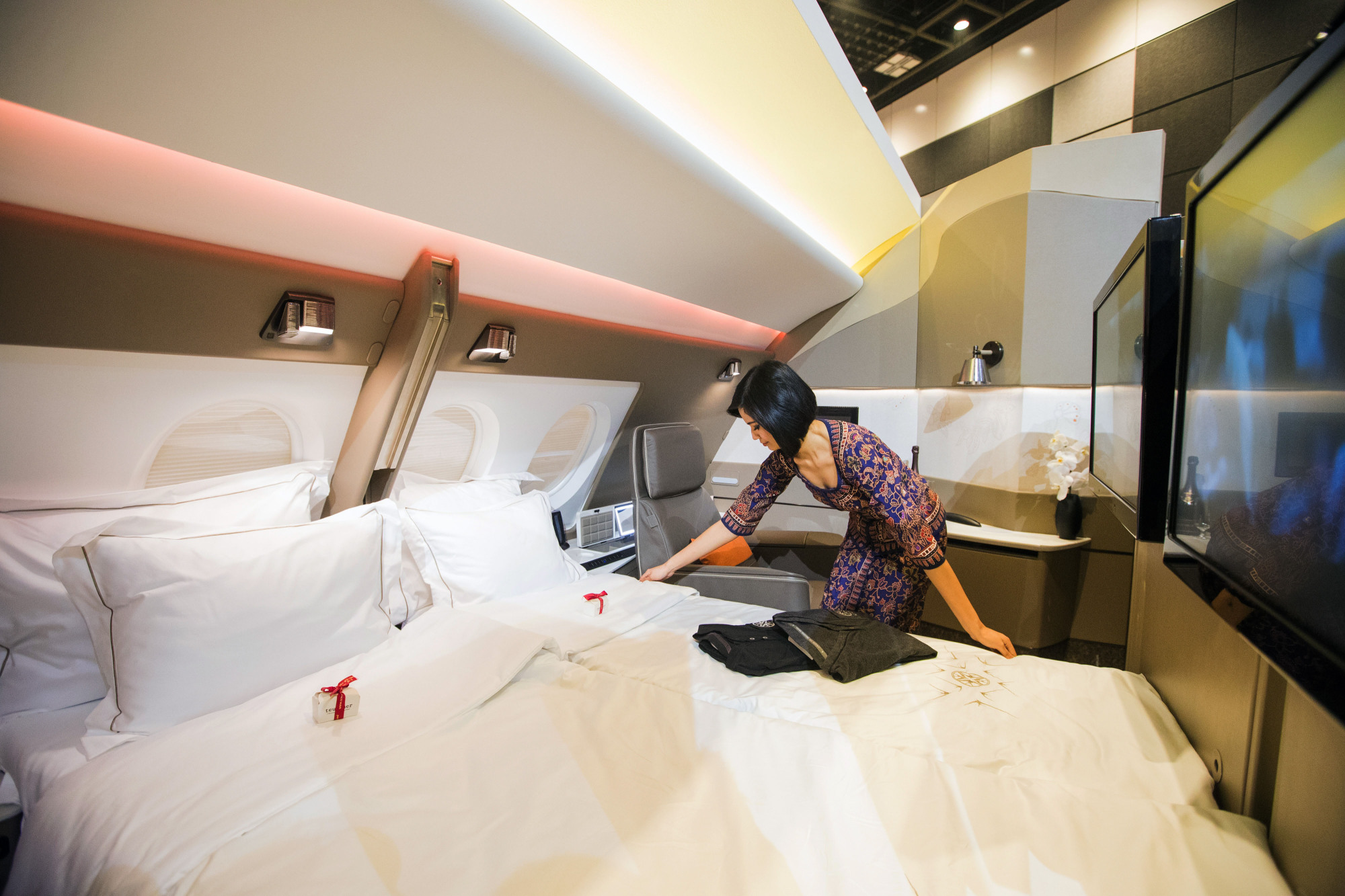At the beginning of November, Singapore Airlines Ltd. announced the world's most luxurious, fully enclosed first-class seat. Passengers can expect the best: bedding (for two, if desired) embroidered by Lalique, dinner served on Wedgewood, a 32-inch HD screen, two bathrooms and a full-sized wardrobe. Just 10 days later, Dubai-based Emirates Airline Ltd. sought to outdo the Southeast Asian giant with its own first-class suite featuring hardwood floors, mood lighting, kelp-infused moisturizing pajamas and design details inspired by the Mercedes-Benz S-Class.
The high-end one-upmanship would appear to herald a new golden age of luxury air travel, at least for those able to afford tickets that cost in excess of $10,000 per passenger. In fact, first-class cabins have been shrinking for two decades at least, under pressure from an increasingly competitive, price-focused global airline industry and the changing demographics of flying. Those trends are only set to accelerate. The latest luxury suites may look futuristic, but it's not clear that first class has a future at all.
The very idea of first-class harkens back more than half a century to the so-called Golden Age of Air Travel, when passenger seating overall was less cramped, food was (allegedly) better, sleeper berths were common and sweatpants weren't acceptable attire for travel. Multiclass cabins, first introduced in the 1950s, put a price on that "golden" experience. The launch of the Boeing 747 in 1969 introduced an even more lavish world for high flyers that included bars and lounges, world-class cuisine and fat sleeper seats.



















With your current subscription plan you can comment on stories. However, before writing your first comment, please create a display name in the Profile section of your subscriber account page.